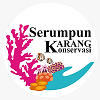The Changes in The Area and Condition of Seague on Lepar Island, South Bangka using Sentinel 2A Image
DOI:
https://doi.org/10.61548/cmj.v2i2.20Keywords:
change, seagrass cover, lepar islandAbstract
Seagrass is a higher-level plant that has symbiosis, vessels and reproduces generatively and lives submerged in water. Seagrass has many functions in waters, namely as a breeding ground, primary producer, water stabilizer, and as a sediment trap. The large number of mining activities in the Bangka Belitung Islands Province, especially in South Bangka district, can cause sediment to enter the seagrass ecosystem which will indirectly damage the seagrass ecosystem. Not only mining, many other human activities around the seagrass ecosystem also pose a threat to this ecosystem, such as ship propellers, reclamation activities and dock construction. The method used to determine station points ispurposive sampling, to assess the condition of seagrass using the quadratic transect method at 3 stations, namely Penutuk, Tanjung Sangkar and Tanjung Labu. The research results of the seagrass area on Lepar Island in 2020 was 1437.53 Ha, in 2021 it was 1428.14 Ha, in 2022 it was 1339.54, and in 2023 it was 1258.22. The changes in seagrass area that occurred were a reduction in area of 9.39 Ha from 2020-2021, in 2021-2022 it decreased by 88.6, in 2022-2023 it decreased by 81.22 Ha and the total change in seagrass area from 2020-2023 was reduced by 179.31 Ha. The condition of seagrass cover on Lepar Island is categorized as poor with a percentage of station 1 (Penutuk) 22.042%, station 2 (Tanjung Sangkar) 14.071%, and Station 3 (Tanjung Labu) 0.0868%.Downloads
Download data is not yet available.
Downloads
Published
2024-12-30
Issue
Section
Articles
License
Copyright (c) 2024 Coastal and Marine Journal

This work is licensed under a Creative Commons Attribution-ShareAlike 4.0 International License.

This work is licensed under a Creative Commons Attribution-ShareAlike 4.0 International License.
Copyright Transfer Terms
- The author in submitting online understands that if the manuscript is accepted for publication, the copyright of the manuscript will be given to the Coastal and Marine Journal as the publisher of the journal.
- Copyright includes the exclusive right to reproduce and distribute articles in all forms of media, including reprints, photographs, microfilm and other similar reproductions, as well as their translations.










